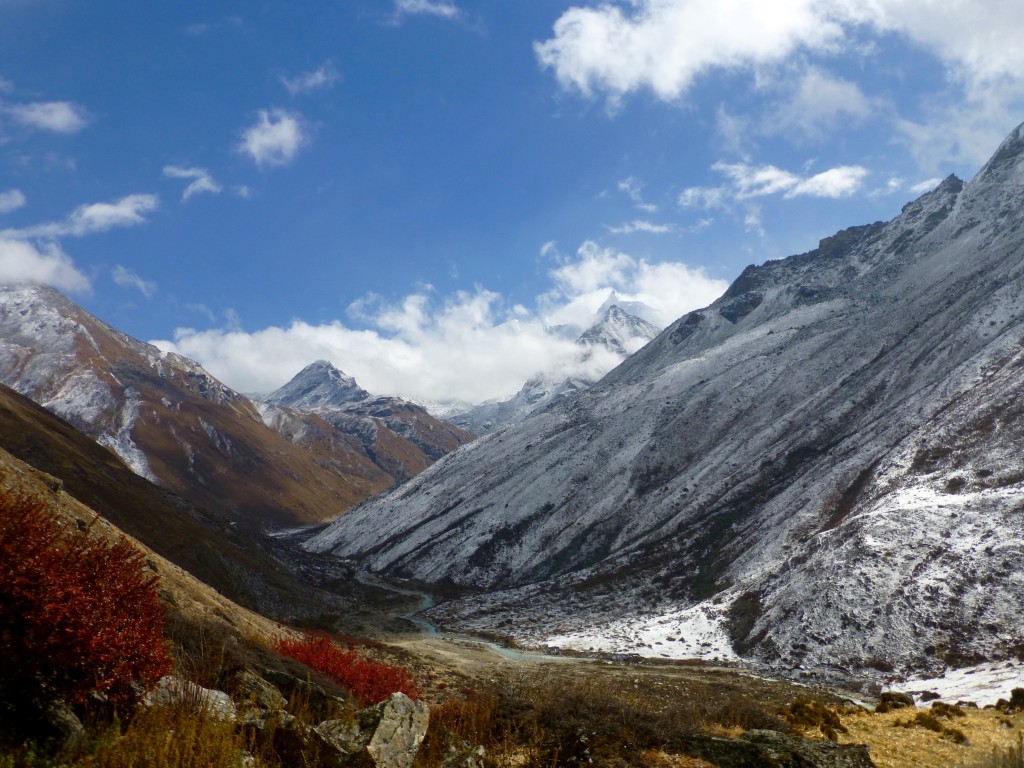
Eleni Wood, The Open University
Unlocking the secrets of the Himalaya
I’ve always been a bit of a mountain addict, so when I began my studies in Earth Sciences, I was overjoyed to find that I suddenly had a legitimate reason for being a bit mountain mad. I discovered that, in detail, the geological processes responsible for the formation and evolution of mountain belts are fascinatingly complex. I also found that there are likeminded people, who are, like detectives, conducting research that aims to uncover the million year old mysteries of the mountains.
I am now at the Open University where, as part of my PhD studies, I’ve had the dream-come-true-chance to visit Bhutan in the eastern Himalaya. My research aims to figure out how and why a particular set of rocks that 15 million years ago lay at 40 km depth below the surface, have been transported to the surface where they lie today.

The Masang Kang valley in north-west Bhutan, Eleni’s study area in the eastern Himalaya. Photo: Eleni Wood.
In December 2016, I was asked to give a 10 minute talk to secondary school students as part of the annual STEM Matters Lectures. In my talk, I showed the range of analytical techniques I use in the lab investigate the geological histories of my rocks.
You can watch the talk below, and read the abstract below that. The video is just under ten minutes long.
Talk abstract
Devastating earthquakes and explosive volcanic eruptions routinely make headlines in our newspapers. They are a constant reminder that planet Earth is restless and evolving. However, there are much more subtle and secretive processes that are happening tens of kilometres beneath our feet that can, over time, lead to the formation of some of our planet’s greatest natural wonders.
The Earth’s magnificent mountain belts are unique in our Solar System. They are a product of plate tectonics, a phenomenon which drives the movement, formation and destruction of the Earth’s rocky crust. My research takes me to the Himalaya in Asia, where something as small as a single rock can help us wind-back the geological clock millions of years to show us how the mountain range formed.
In this talk, I will delve into the geologist’s toolkit to show how, under scrutiny in the lab, the smallest details in rocks can help us investigate the events that followed the Indian continent’s head-on collision with southern Asia.
If you’re interested in how the rocks I analyse get from the Himalaya to the laboratory in Milton Keynes, please read the post and watch the previous talk called ‘Mud, sweat and leeches’, by Clare Warren.
Acknowledgements
This post discusses an activity that was organised through the Open University’s RCUK-funded School-University Partnership Initiative, ‘Engaging Opportunities‘, a partnership between the Open University and the Denbigh Teaching School Alliance.
